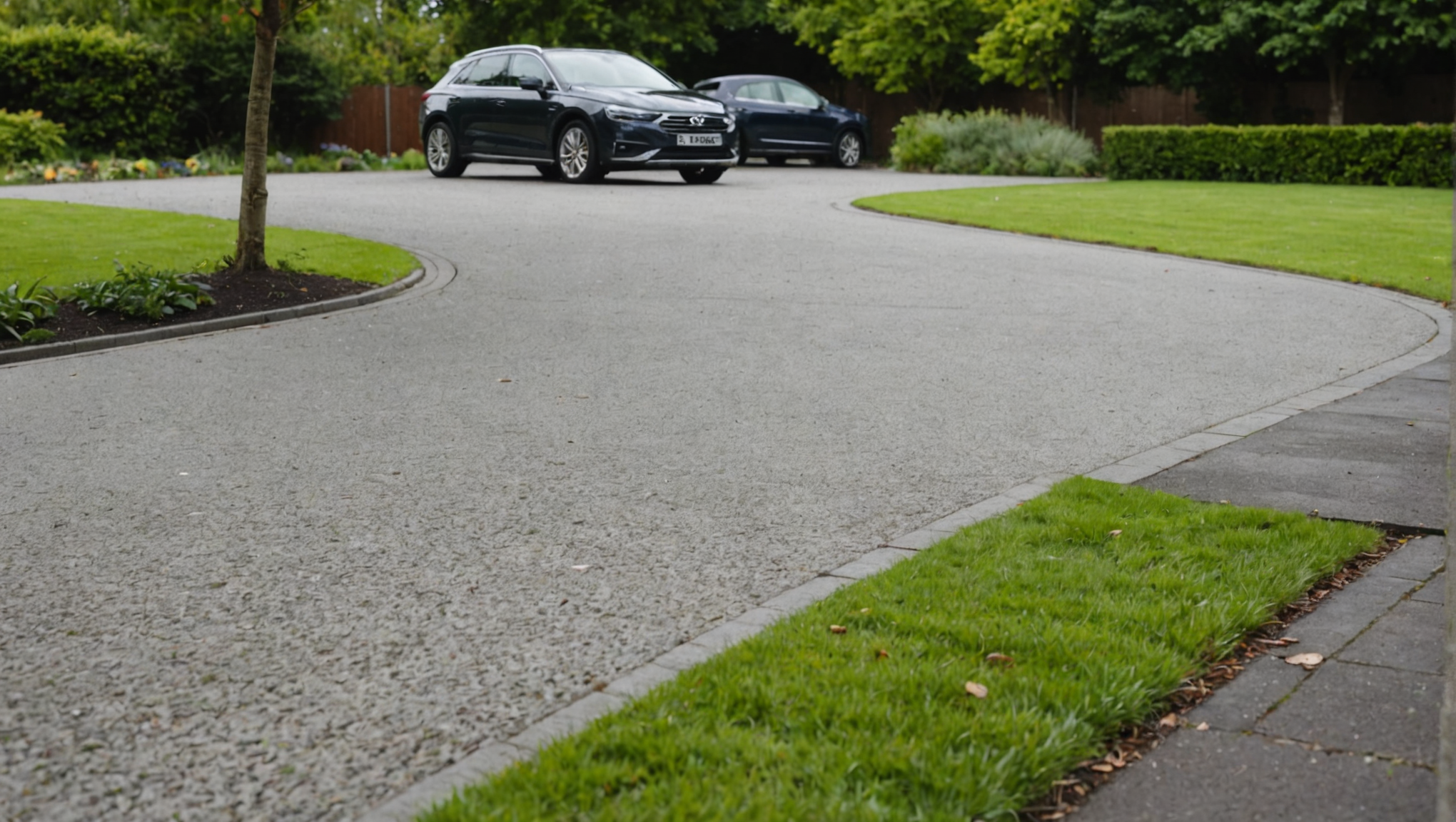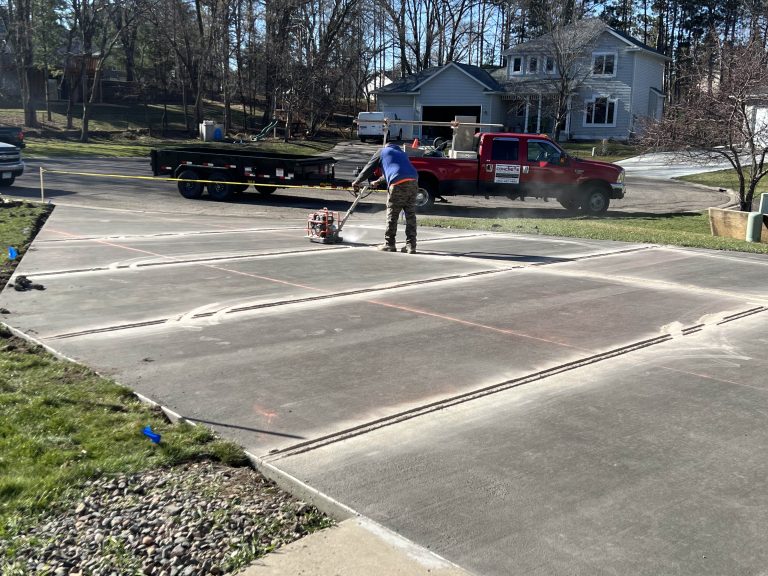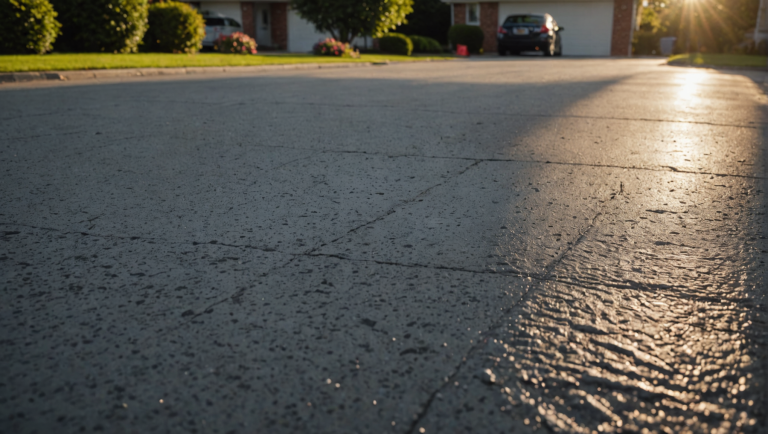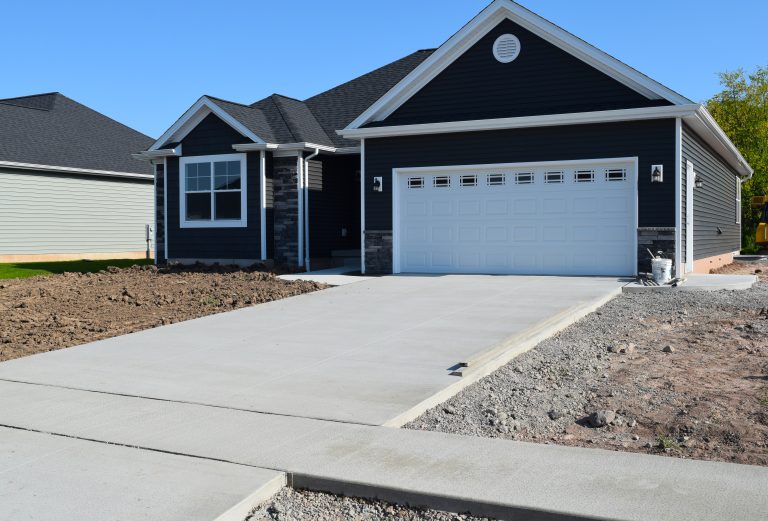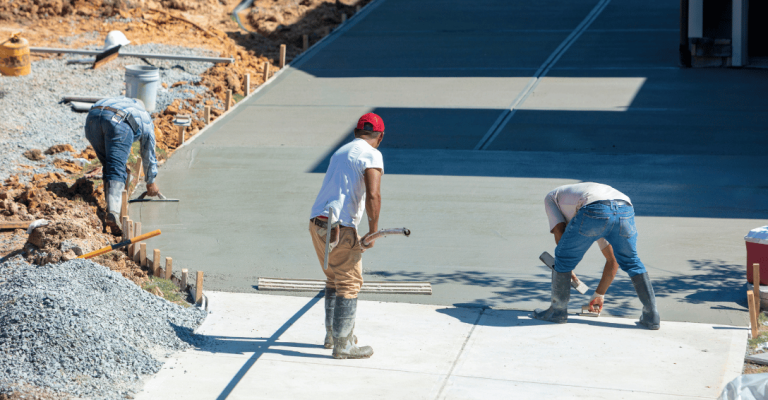Concrete Driveways Resurfacing and Repair Boosts Curb Appeal and Longevity
In the domain of property upkeep, the function of driveway resurfacing and repair often goes unnoticed. Yet, this task plays a critical role in enhancing curb appeal and ensuring the longevity of the driveway. By fixing current imperfections and preventing additional damage, it improves both the visual and structural aspects of the property. It is an investment that pays off in the long term, not only by maintaining the aesthetics of your property but also by reducing future expenses. So, how does this process work, and what factors should be considered? Let’s explore.
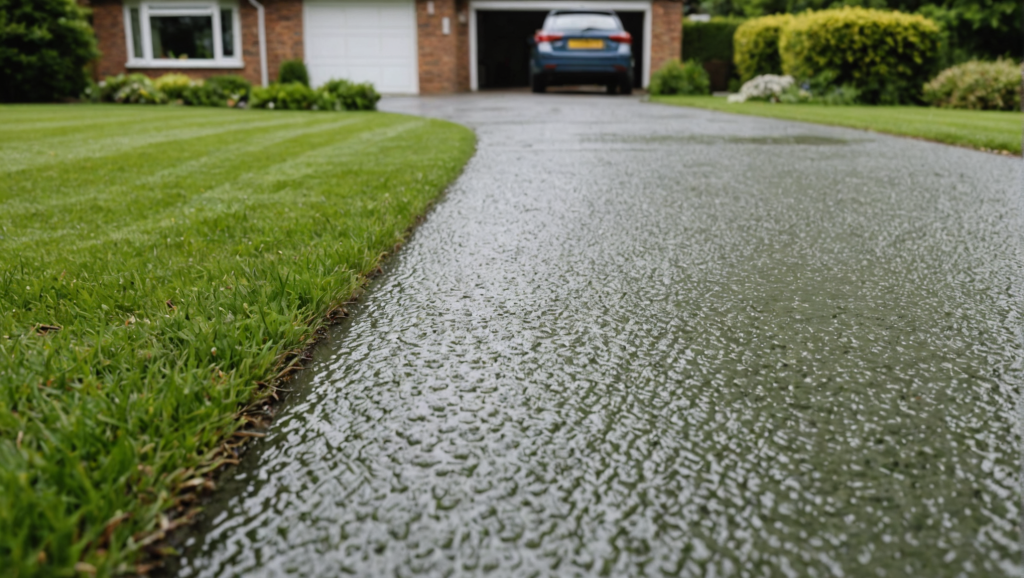
Understanding Concrete Driveway Damage
Frequently, homeowners underestimate the importance of understanding the various factors that contribute to concrete driveway damage, which can range from wear and tear due to weather conditions to structural issues caused by improper installation. A thorough comprehension of these factors is vital in maintaining the aesthetic appeal and functional utility of concrete driveways.
Environmental factors, including fluctuating temperatures and harsh weather conditions, can cause concrete to expand and contract, leading to cracks and fissures. Water penetration, especially during freezing and thawing cycles, can worsen this damage, causing spalling and potholes. Similarly, exposure to chemical deicers can corrode the concrete surface, thereby weakening its structural integrity.
Improper installation is another significant contributor to concrete driveway damage. Subpar workmanship, inadequate concrete mix, and improper curing can lead to a weak driveway prone to cracking and chipping. An improperly prepared subgrade can result in uneven surfaces and structural failures.
To prevent such damages, it is crucial to employ a professional, knowledgeable, and experienced contractor for the installation and maintenance of concrete driveways. Equipped with a profound understanding of the factors causing concrete driveway damage, homeowners can ensure the longevity and visual appeal of their driveways.
Longevity of Concrete Driveways
Delving into the longevity of concrete driveways, noting that a well-installed and properly maintained concrete driveway can last up to 30 years or more is essential, ensuring remarkable durability and cost-effectiveness in the long run. With proper care and minimal maintenance, these structures can serve homeowners faithfully, providing a steady, reliable surface for vehicles and enhancing the overall look of the property.
In the pursuit of longevity, two factors play key roles – quality of installation and maintenance. The initial installation must be done meticulously, adhering to industry standards. The concrete mix used, the reinforcement implemented, and the finish applied all contribute to the long life of a driveway.
Let’s examine these factors more closely:
| Factor | Description |
|---|---|
| Quality of Installation | This includes the professional preparation of the base, careful mixing and pouring of concrete, and precise finishing. |
| Concrete Mix | The right blend of cement, aggregate, and water can make the difference between a driveway that lasts a few years and one that lasts decades. |
| Reinforcement | The use of steel bars or mesh in the concrete can greatly enhance its strength and durability. |
| Maintenance | Regular cleaning, sealing, and minor repair can keep a concrete driveway looking new and functioning well for many years. |
Benefits of Driveway Resurfacing
Shifting gears to the topic of driveway resurfacing, it is imperative to note that this process offers numerous benefits, including cost-effectiveness, improved functionality, and enhanced aesthetics.
Firstly, resurfacing is a cost-effective solution to extensive wear and tear. Rather than replacing the entire driveway, which can be a costly endeavor, resurfacing provides a more economical option. The materials and labor involved in resurfacing are notably less than those required for a full replacement, thereby making it a budget-friendly alternative.
Secondly, resurfacing improves the functionality of the driveway. Over time, cracks and potholes can damage your car and make driving surfaces unsafe. Resurfacing smooths out these imperfections, ensuring a safer and more comfortable driving experience.
Lastly, a resurfaced driveway enhances the overall aesthetics of your property. A well-maintained driveway contributes to the curb appeal, creating a positive first impression for visitors and potential buyers. It can effectively transform the look of your property without the need for a full-scale renovation.
The Resurfacing Process Explained
The resurfacing process is a critical aspect of concrete driveway repair, requiring careful attention to guarantee best results. We will first elucidate the various steps involved in resurfacing, offering an in-depth understanding of this complex procedure.
Subsequently, a detailed discussion on the selection of suitable materials, a crucial component of the process, will be undertaken, providing valuable insights for informed decision-making.
Understanding Resurfacing Steps
In the world of concrete driveway repair, understanding the resurfacing process is crucial to achieving a successful and durable result. This process is thorough and involves several key steps that must be meticulously executed.
The resurfacing journey begins with the cleaning and preparation of the existing surface. It is essential to remove stains, dirt, and loose particles to guarantee a strong bonding between the old and new layers of concrete.
The next step is the repair of any visible cracks or damages. This involves filling the cracks with a high-quality sealant to prevent further damage and ensure an even surface.
Once the preparation is complete, the application of a primer layer follows. This guarantees better adhesion of the resurfacing material to the old concrete.
The final step is the application of the resurfacing material itself. It is spread evenly across the surface and then carefully smoothed out.
Choosing Appropriate Materials
Selecting the appropriate materials for concrete driveway resurfacing is a crucial step in the process, as this decision significantly influences the longevity and aesthetic appeal of the finished product. The materials chosen should not only blend harmoniously with the existing architecture and landscape but also demonstrate a proven track record of durability and resilience.
Two primary types of materials are commonly used for resurfacing: concrete overlays and decorative concrete. Concrete overlays are frequently selected for their robustness and ability to withstand harsh weather conditions. They are available in various textures and colors, allowing homeowners to personalize the appearance of their driveway to their preference.
Decorative concrete, conversely, offers a variety of aesthetic possibilities. With choices like stamped or colored concrete, decorative concrete can replicate the appearance of natural stone or brick, delivering a fashionable finish to the driveway.
Nevertheless, the selection process should not be hurried. It necessitates thorough evaluation of both the practical and aesthetic requirements of your driveway. In this respect, seeking guidance from a knowledgeable contractor can offer valuable insights and recommendations. This guarantees that the materials chosen will not only enhance the curb appeal of your property but also endure the test of time.
Repair Vs. Replacement: Making the Choice
When considering concrete driveway maintenance, the decision between repair and replacement is critical. This choice requires careful assessment of the damage severity and a thorough cost-benefit analysis.
In the following discussion, we will provide expert guidance to assist homeowners in making an informed decision.
Evaluating Damage Severity
Evaluating the severity of damage to your concrete driveway is the critical first step in determining whether repair or full replacement is the most appropriate course of action. This initial assessment involves a thorough examination of the driveway’s surface to identify types of damage, their extent, and implications for the structure’s integrity.
| Type of Damage | Implications | Possible Course of Action |
|---|---|---|
| Minor Cracks | These are usually superficial, affecting only the aesthetic appeal. | Resurfacing or sealing could be an effective solution. |
| Major Cracks | These deeper, wider cracks could compromise the structural integrity of the driveway. | Repair might be possible, but replacement could be necessary in severe cases. |
| Subgrade Issues | These denote problems with the foundation. They are typically indicated by sinking or uneven areas. | Replacement is often required to rectify foundational issues. |
Your belonging to a community that values well-maintained homes starts with understanding the state of your driveway. A professional assessment can help you make an informed decision, ensuring your driveway not only enhances curb appeal but also provides long-term functionality and safety. Remember, the right choice between repair and replacement is not just about immediate cost but also about the longevity and aesthetic value of your driveway.
Cost-Benefit Analysis
Having determined the extent of the structural damage, the next step is to conduct a thorough cost-benefit analysis to determine whether repairing or replacing your concrete driveway would be the more financially prudent option. This analysis involves comparing the cost of repair against the cost of replacement, alongside the potential lifespan of each scenario.
If the damage is extensive, the cost of repair may approach or even exceed that of a full replacement. In such cases, replacement becomes the more economical choice, providing a fresh start and potentially extending the durability of your driveway.
Conversely, if the damage is minor, a simple repair can effectively restore your driveway at a fraction of the cost of a total replacement, boosting its lifespan and maintaining its aesthetic appeal.
However, it’s essential to factor in not just the immediate costs, but also the long-term ones. A cheap repair might seem attractive, but if it only serves as a band-aid solution that necessitates repeated fixes, the cumulative repair costs could soon outstrip the one-time cost of a complete replacement.
This underscores the importance of a detailed cost-benefit analysis when deciding between repair and replacement.
Cost-effective Repair Solutions
One must consider budget-friendly solutions when it comes to the repair and resurfacing of concrete driveways. A thrifty yet effective approach is to identify and rectify issues at their inception. Small cracks and minor superficial damage, if addressed promptly, can prevent larger-scale, more costly repairs down the line.
Polymers, such as epoxy resins, are often used in the repair process due to their cost savings and durability. These materials can effectively fill in cracks and strengthen the surface, restoring the driveway’s structural integrity. However, the application technique and preparation are vital to the success of such repairs.
Another economical solution is using sealants regularly. Sealants not only restore the sheen of the driveway but also provide a protective layer against weathering and stains. This proactive measure can significantly prolong the lifespan of the driveway, reducing the need for frequent expensive repairs.
Lastly, professional services offer budget-friendly packages including inspection, repair, and maintenance. These services leverage their experience and expertise to provide hassle-free, quality repair solutions. They can offer advice on the most suitable methods and materials for your specific driveway, ensuring longevity and cost efficiency.
Enhancing Curb Appeal With Resurfacing
Beyond the practical benefits of repair and maintenance, resurfacing your concrete driveway can greatly enhance the curb appeal of your home, adding value and aesthetic allure. A fresh, well-maintained driveway creates a welcoming impression, subtly influencing how visitors and potential buyers perceive your property.
Resurfacing is a transformative process. It can effectively hide unsightly cracks, discoloration, and wear, giving your driveway a revitalized, clean look. With a variety of finishes and colors available, resurfacing provides an opportunity to customize the appearance of the driveway to match the overall aesthetic of your home. This can range from a classic gray finish to more intricate decorative patterns and colors.
Importantly, curb appeal is not just about looks. A well-maintained driveway is a signal of a well-maintained home, suggesting to potential buyers that you take care of your property. This can significantly boost the perceived value of your home.
In addition, a smooth, crack-free driveway is safer and more inviting for both vehicles and pedestrians.
Ultimately, enhancing curb appeal through driveway resurfacing is a strategic investment that pays off in improved aesthetics, increased home value, and a sense of pride in your property.
Case Study: Successful Resurfacing Projects
To illustrate the potential results of driveway resurfacing, let’s explore a few case studies that showcase successful projects and their transformative effects.
In one case, a residential property in San Diego had a 20-year-old concrete driveway that was severely cracked and discolored. After resurfacing, the driveway had a uniform, fresh, and more appealing look that notably improved the home’s curb appeal.
Another instance involved a commercial property in Los Angeles, where the expansive concrete driveway was showing signs of wear and tear. The successful resurfacing project not only enhanced the property’s visual appeal but also extended the driveway’s lifespan.
To further illustrate, let’s take a look at a comparative table:
| Before Resurfacing | After Resurfacing |
|---|---|
| Cracked and discolored surface | Uniform and appealing surface |
| Surface wear and tear | Enhanced durability |
| Lower property value | Increased property value |
| Potential safety hazards | Safe and smooth surface |
| Frequent maintenance | Reduced maintenance |
These projects highlight how concrete driveway resurfacing can transform a property’s aesthetic appeal and increase its longevity, making your investment worthwhile. As a property owner, you stand to gain notably from undertaking such a project.
Selecting a Professional Contractor
Finding the process of selecting a professional contractor for your driveway resurfacing project is a critical step that requires careful consideration and informed decision-making. The quality of the workmanship, and ultimately the longevity and aesthetics of your driveway, hinges on the competency of the contractor you choose.
Firstly, seek out contractors with a proven track record in the industry. Look for several years of experience, positive customer reviews, and an extensive portfolio of completed projects. These indicators demonstrate a contractor’s ability to deliver high-quality outcomes consistently.
Secondly, make sure that your chosen contractor is licensed, insured, and bonded. This provides protection against potential financial risks associated with accidents or substandard work. Additionally, it’s a reflection of their commitment to adhering to industry standards and regulations.
Lastly, communication is key. A good contractor will listen to your needs, provide expert advice, and keep you informed throughout the project. This collaborative approach ensures that the end result aligns with your expectations, fulfilling your desire for a renewed, appealing, and durable driveway.
Maintenance Tips Post-Resurfacing
After successfully resurfacing your concrete driveway, maintaining routine practices is crucial to preserve its longevity and appearance.
This includes:
- Regular cleaning routines
- Identifying and addressing damage early
- Implementing weather protection measures
These practices will guarantee the durability of your driveway, keeping it in excellent condition for many years.
Regular Cleaning Routines
Ensuring the durability and visual charm of your resurfaced concrete driveway, regular cleaning routines are pivotal in upholding its condition and preventing further damage. As a proactive homeowner, engaging in consistent cleaning practices not only enhances the visual allure of your driveway but also contributes to the overall value of your property.
A simple, yet effective cleaning routine begins with sweeping the surface regularly. This helps in removing debris and preventing the buildup of dust, leaves, and other materials that can cause staining or erosion over time.
For a more thorough clean, consider using a power washer, ideally bi-annually. This will help to eliminate stubborn stains, algae, and mildew, thereby maintaining the driveway’s pristine condition.
Additionally, it is recommended to use a concrete sealer post-cleaning. This acts as a protective layer against water, oil, and other contaminants, extending the lifespan of your resurfaced driveway.
In essence, maintaining a regular cleaning routine is an integral aspect of responsible ownership. It not only preserves the aesthetic appeal of your driveway, but also its structural integrity, ensuring you enjoy the benefits of the resurfacing for a significant period of time.
Spotting Damage Early
To prolong the longevity of your resurfaced concrete driveway, early detection of potential damage is essential, warranting regular inspections and prompt repair work. Recognizing the signs of damage at the earliest stages allows for the implementation of corrective actions which can prevent further damage and guarantee your driveway remains in prime condition for a longer period.
The following table outlines some common signs of early damage and corresponding remedial actions that should be performed.
| Signs of Damage | Remedial Actions |
|---|---|
| 1. Crack formation | Immediate filling and sealing |
| 2. Surface discoloration | Apply a new color hardener |
| 3. Pitting or popouts | Resurfacing or patching |
| 4. Scaling or spalling | Apply a high-quality sealer |
| 5. Deicing salt damage | Use sand or substitute deicers |
Proactive measures such as these not only contribute to a longer lifespan for your driveway but also help maintain its visual appeal, enhancing your home’s overall curb appeal. By staying vigilant for early signs of damage and taking immediate corrective measures, you can guarantee that your investment in a resurfaced concrete driveway is both durable and aesthetically pleasing.
Weather Protection Measures
Despite the durability of a resurfaced concrete driveway, it is still susceptible to weather-related wear and tear, necessitating the implementation of protective measures to maintain its best condition. Weather protection is more than a mere maintenance routine; it’s an investment in the longevity of your driveway, preserving its aesthetic appeal and structural integrity.
One key protective measure is the application of a high-quality concrete sealer. This provides an additional layer of protection against rain, snow, ice, and the sun’s ultraviolet rays, all of which can cause cracking and scaling over time. The sealer also helps to repel oil stains and other contaminants, ensuring the driveway remains clean and attractive.
Regular sweeping and cleaning of the driveway can prevent accumulation of debris, which can cause staining and deterioration.
In colder climates, using a snowblower or a plastic shovel instead of a metal one can prevent unnecessary damage from scrapes and scratches.
Frequently Asked Questions
Can Concrete Driveway Resurfacing Withstand Harsh Weather Conditions?
Yes, driveway resurfacing with concrete can withstand harsh weather conditions. This is because of its durability and strength, which provides resistance to extreme temperatures and weather patterns, thereby extending its longevity greatly.
What Materials Can Be Used to Resurface a Concrete Driveway?
Various materials can be utilized for resurfacing concrete driveways. These include polymer-modified cement overlays, epoxy-based systems, microtoppings, and spray-down systems, each offering unique aesthetics and durability to withstand different weather and usage conditions.
How Long Does It Typically Take to Resurface a Concrete Driveway?
Typically, resurfacing a concrete driveway can take between two to three days, depending on the size and complexity of the project. This timeframe includes surface preparation, application of the resurfacing material, and adequate drying time.
What Are the Environmental Implications of Concrete Driveway Resurfacing?
Resurfacing concrete driveways has environmental implications including reduced waste production, as existing material is reused, and decreased carbon footprint due to less manufacturing and transportation of new concrete, contributing to sustainable construction practices.
Will Resurfacing My Concrete Driveway Add Value to My Home?
Yes, resurfacing your concrete driveway can greatly enhance your home’s value. It improves the property’s aesthetic appeal and durability, making it more attractive to potential buyers and increasing its marketability and overall worth.

